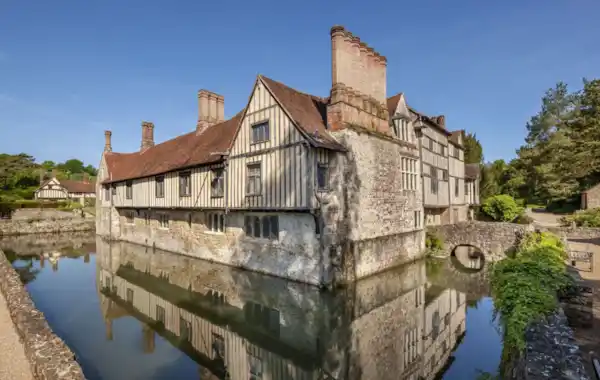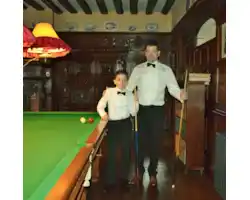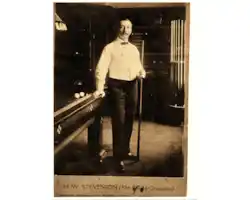26 November 2018
|
Across more than 100 years and five generations, 11-year-old Lukas Tremaine-Stevenson and his parents, made a connection with a famous sporting ancestor. Former snooker ref and National Trust volunteer Peter Watson tells how this happened
A picture on the wall of a medieval manor house has helped to link an 11-year-old schoolboy with a famous sporting ancestor. The 11-year-old is Lukas Tremaine-Stevenson, and he, with his parents, made a connection with a famous sporting ancestor, as former snooker referee Peter Watson explains.
Across more than 100 years and five generations, Lukas Tremaine-Stevenson and his parents made the connection at Ightham Mote, the 700-year-old National Trust property at Ivy Hatch, near Sevenoaks.
There, in the sumptuous Victorian billiard room, Lukas came face to face with his 3x great-grandfather Harry, who won the World Billiards Championship three times before the First World War.
Lukas, who lives in Truslers Hill Lane, Albourne, Hassocks and is a pupil at Glebe Primary School, Southwick, had been invited to the moated manor house for a private visit following a chance discovery by his parents.
On an earlier outing to the house and gardens, Mat and Sharon Tremaine-Stevenson visited the billiard room, which was created from three medieval rooms built at about the time that Columbus was discovering America.
On the wall among the historic pictures, the couple discovered a familiar name on a Vanity Fair caricature: H.W. (Harry) Stevenson, 1874-1944.
It was a name Mat and Sharon instantly recognised: it was Grandad Harry, the 2x great-grandfather to Mat and 3x great-grandfather to Lukas.
The National Trust invited the whole family back as special guests so that Lukas could see the kind of surroundings in which his illustrious ancestor made his reputation.
So it was that Lukas and his dad, appropriately wearing bow ties and carrying vintage billiard cues, were photographed next to the 1891 table as they created their own version of an archive image of Harry from a Victorian postcard.
Lukas was given some playing tips by volunteer room guide Peter Watson, a former snooker referee, and learned how Harry toured the world, made the first 1,000-point competitive break in billiards history, and was credited as one of the pioneers in England of snooker, which grew from billiard roots.
The family were also given a conducted tour of the house, and Lukas said at the end of his visit: “This is cool. I’ve played pool with my friends, but it was nothing like this. The table is so big. I’m looking forward to giving my Dad a game of snooker.”
In 1909, Stevenson challenged another professional to a match, wagering £500 on himself (about £40,000 today), and Mat recalled family stories about Harry’s wealth:
“He was a sporting superstar in his era, and was very proud of being the first person in his street to own a motor car.”
Although he has not played snooker for about 10 years, Mat said: “Having seen the beautiful Ightham Mote billiard room and Lukas’ s excitement about it all, I think I’ll take it up again. It will be a good sport for father and son.”
Sharon has donated a copy of her extensive Stevenson research to the Ightham Mote archives. She said: “It has been brilliant for Lukas to see the kind of setting in which Harry played and made his name. Visiting an historic property like Ightham Mote helps bring the family history to life.”
- Have a Go: Ightham Mote offers visitors a chance to play some snooker or billiards shots on the table, depending on the availability of volunteers. See the Ightham Mote website and social media for details on the property and events.










